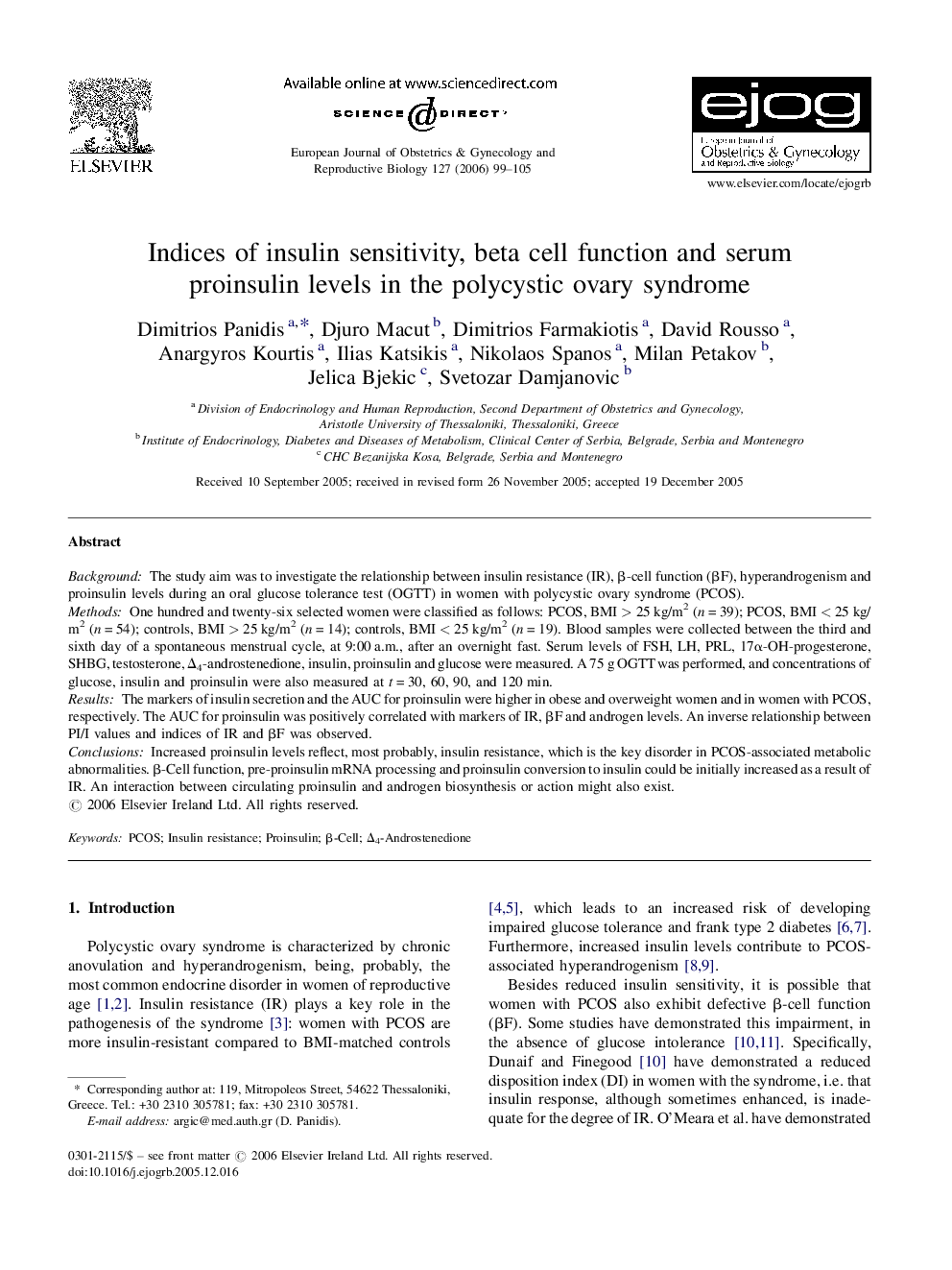| Article ID | Journal | Published Year | Pages | File Type |
|---|---|---|---|---|
| 3922313 | European Journal of Obstetrics & Gynecology and Reproductive Biology | 2006 | 7 Pages |
BackgroundThe study aim was to investigate the relationship between insulin resistance (IR), β-cell function (βF), hyperandrogenism and proinsulin levels during an oral glucose tolerance test (OGTT) in women with polycystic ovary syndrome (PCOS).MethodsOne hundred and twenty-six selected women were classified as follows: PCOS, BMI > 25 kg/m2 (n = 39); PCOS, BMI < 25 kg/m2 (n = 54); controls, BMI > 25 kg/m2 (n = 14); controls, BMI < 25 kg/m2 (n = 19). Blood samples were collected between the third and sixth day of a spontaneous menstrual cycle, at 9:00 a.m., after an overnight fast. Serum levels of FSH, LH, PRL, 17α-OH-progesterone, SHBG, testosterone, Δ4-androstenedione, insulin, proinsulin and glucose were measured. A 75 g OGTT was performed, and concentrations of glucose, insulin and proinsulin were also measured at t = 30, 60, 90, and 120 min.ResultsThe markers of insulin secretion and the AUC for proinsulin were higher in obese and overweight women and in women with PCOS, respectively. The AUC for proinsulin was positively correlated with markers of IR, βF and androgen levels. An inverse relationship between PI/I values and indices of IR and βF was observed.ConclusionsIncreased proinsulin levels reflect, most probably, insulin resistance, which is the key disorder in PCOS-associated metabolic abnormalities. β-Cell function, pre-proinsulin mRNA processing and proinsulin conversion to insulin could be initially increased as a result of IR. An interaction between circulating proinsulin and androgen biosynthesis or action might also exist.
